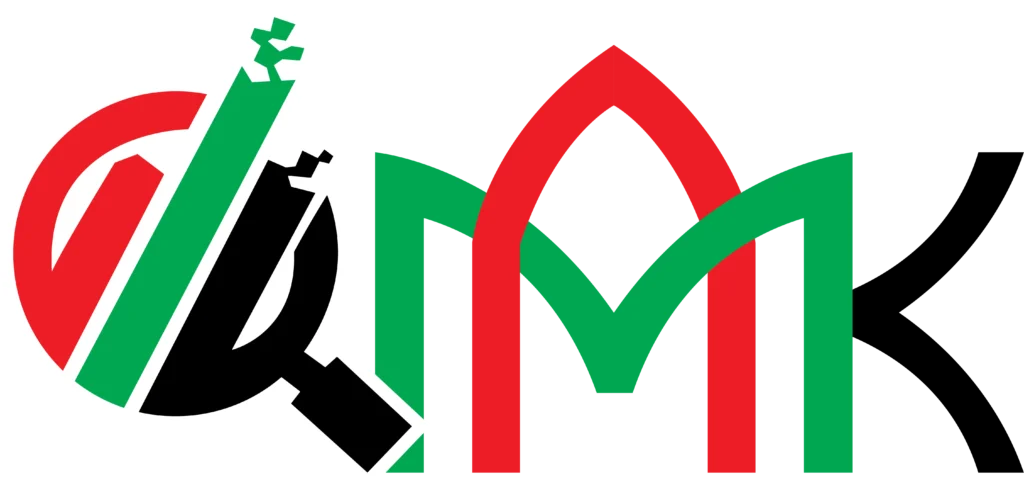Labor and Immigration Card Services in the UAE: A Clear Guide
Why these cards matter for every company and worker
The UAE uses structured systems to manage work and residency. A labor card confirms the right to work under an employer. An immigration card confirms a company’s right to sponsor and to manage visas. These records sit in government databases. Officers read them during checks. Banks, airlines, and service portals rely on them. A business keeps its workforce lawful with these records. A worker keeps status clean with these records.
Companies risk fines when records expire. Workers risk penalties when permits lapse. A small gap can block a payroll or a border crossing. Good planning stops those gaps. Clean documents speed every step. Clear files also protect brand trust during audits.
What a labor card actually is
A labor card is a work permit for an expatriate worker. The card ties a person to one employer under one role. It links to the employment contract in the labor system. It shows the worker’s name, nationality, passport number, job title, and sponsor. It holds a unique number and a validity period. Officers use this number during inspections or disputes.
The law expects the sponsor to apply within set days after the worker’s entry. The timeline protects both sides. The card usually runs two years, depending on category and rules. Renewals follow the same checks with updated documents. A careful HR team tracks these dates on a calendar with reminders.
Who qualifies for a labor card
A worker must meet basic rules. The worker must be at least 18. The worker must hold a role that fits the company’s license. The worker must pass a medical fitness test at an approved center. The worker must have education or experience that matches the job title. The worker must hold a valid entry permit and a clean record.
Employer duties before filing
- Keep the trade license active and the establishment card valid.
- Hold quota where a quota applies.
- Keep the company’s signatory list up to date.
- Maintain a compliant contract with clear pay and duties.
Steps to apply for a labor card
Step 1: Prepare the file
The employer collects the worker’s passport copy, photo, entry permit, and signed contract. The employer gathers the trade license, establishment card, and authorized signatory pages. If the job needs education proof, the employer attaches attested certificates.
Step 2: Submit in the labor portal
The employer files through the official system or a registered typing center. The data must match the passport and the contract. The employer pays the fees shown in the portal. The receipt shows the application number for tracking.
Step 3: Await review and respond
The authority reviews the file and may ask for clarifications. The employer replies with clean scans and short notes. After approval, the labor card record appears in the system. The worker then finishes medical, Emirates ID, and residence steps if still pending.
Step 4: Store proofs and educate the worker
HR stores the approval, the contract, and the receipts. HR explains duties and site rules to the worker. HR notes the renewal date in a master calendar.
What an immigration (establishment) card is
An immigration or establishment card is a company document. It registers the company in the immigration system. It lets the company sponsor entry permits and residencies. It links the trade license to the visa portal. It lists the authorized signatories who can submit and sign. Without this card, a company can’t hire foreign workers or renew their status.
The card usually runs up to three years. The renewal demands updated company records. The company must keep the same signatory details or file changes. If the card expires, the system blocks new applications. This block delays hiring and renewals until the card returns to active status.
Who qualifies for an immigration card
A lawful company qualifies once it holds a valid trade license. The company must possess an establishment card in the labor system as well. The company must list owners and managers with passport pages and IDs. The company must follow compliance rules, such as labor law, tax registration where required, and health and safety rules for its industry.
Common documents
- Trade license copy and any activity addenda.
- Establishment card copy from labor authorities.
- Memorandum and Articles (or equivalent).
- Passport copies and IDs for owners and signatories.
- Office lease or Ejari for address proof where requested.
Steps to apply for an immigration card
Step 1: Gather company records
The admin team collects the license, corporate documents, owner IDs, and signatory forms. The team checks that names match across all records.
Step 2: File the application
The team submits through the immigration portal or an approved center. The team pays applicable fees and collects a receipt.
Step 3: Track review and finalize
The authority reviews and may seek clarifications. The company responds with short, precise notes. After approval, the card activates in the system. The company can now sponsor entry permits and residencies.
How labor and immigration cards work together
A company needs both records to hire and to renew. The immigration card opens the visa door. The labor card attaches the worker to the sponsor. The residence permit confirms the stay with ID. Payroll runs under this triangle of records. Airline officers and bank officers rely on these records for checks. A gap in any one record can pause the worker’s access to services.
The sequence in practice
- Immigration card active → sponsor can apply for entry.
- Entry permit issued → worker travels and enters.
- Labor card approved → contract sits in the labor file.
- Medical + biometrics → ID request moves forward.
- Residence issuance → legal stay and full access begin.
Validity, renewals, and common timelines
An immigration card often runs up to three years. A labor card often runs two years. A residence permit usually runs two or three years, depending on category. HR should begin renewals weeks before expiry. Medical and ID renewals take time, so early booking helps. Holidays can extend queues. A 45–60 day buffer protects against rush fees and mistakes.
Renewal checklist
- Updated trade license and establishment cards.
- Updated authorized signatory forms if people changed.
- Worker passport copies with sufficient validity.
- New medical fitness for the worker where required.
- Updated insurance proof if the emirate requires it.
- Fee receipts stored with the new approvals.
What makes files slow or risky
Inconsistent names: A small spelling change creates flags.
Expired signatory cards: Portals block submissions without updates.
Wrong job title: The title must match the company’s licensed activities.
Missing education attestations: Certain roles require attested diplomas.
Late medical or biometrics: Delays add costs and can cause fines.
A second review before submission removes most errors. A single owner or HR manager should approve names, numbers, and dates.
Medical fitness and biometrics in plain words
Workers complete medical tests at approved centers. Tests screen for infectious diseases. Results flow into the digital record. Workers also complete biometrics for Emirates ID. Biometrics capture fingerprints and a face image. The ID card prints after approvals. The digital ID functions in many portals before the physical card arrives.
Best practices
- Book medical and biometrics right after entry.
- Carry originals to every appointment.
- Keep receipts until the card arrives.
- Confirm clinic location and hours before you go.
Banking, payroll, and the wage system
Banks ask for valid residence records and IDs. Payroll relies on lawful work status. Some categories require wage protection submissions. A correct labor card and contract support this process. A consistent name across systems prevents returned transfers. HR should test the first payroll after a new joiner’s activation.
Audits, inspections, and evidence
Authorities may inspect sites and request files. A company should keep contracts, approvals, and ID copies in a single archive. Digital folders with clear names help officers review quickly. Safety inductions, attendance logs, and leave records support compliance. A tidy archive reduces risk and builds trust.
When workers move, exit, or transfer
A worker may change roles or sponsors. The sponsor coordinates cancellations or transfers in the portals. The worker must not overstay grace periods. Exit records and cancellation receipts must sit in the file. When a worker transfers inside the UAE, a status change and new labor steps apply. The new sponsor must verify that the previous file is clean.
Fees and practical cost drivers
Fees vary by category, emirate, and service speed. Education levels and roles can affect amounts. Courier, translation, and attestation add cost. Health insurance also adds cost where mandatory. A clear cost sheet helps finance plan cash flow. A small buffer covers unexpected requests for extra documents.
Ways to control cost
- Submit complete files to avoid rejections.
- Start attestations early to avoid express fees.
- Align job titles with actual duties to prevent amendments.
- Track renewals monthly and book early slots.
Digital systems and data security
Government portals process most steps online. Two-factor authentication protects accounts. Role-based access protects sensitive records. Password rotation and leaver checklists prevent misuse. Logs and screenshots of submissions help during disputes. Keep devices updated and use secure networks during portal work.
Typical 60-day onboarding timeline (example)
- Days 1–7: immigration card check, entry permit request.
- Days 8–14: worker entry, medical booking.
- Days 15–21: medical + biometrics, labor card submission.
- Days 22–35: labor approval, residence issuance, ID printing.
- Days 36–60: payroll enrollment, bank setup, archive of proofs.
Actual times change with season, volume, and document quality.
Common QHSE and site notes for industrial roles
Some roles require safety inductions and PPE. Some roles require vaccinations or extra medical checks. HR should coordinate with HSE teams. Records of training and equipment handovers should sit in the worker’s file. This discipline protects staff, property, and clients.
Related Posts:
How Mubarak Al Ketbi (MAK) Auditing supports your compliance
Complex rules slow operations when teams lack time. Mubarak Al Ketbi (MAK) Auditing builds checklists, prepares files, and submits clean applications. Our team tracks renewals, updates signatories, and handles corrections. Our team coordinates medical, biometrics, and ID logistics. Our advisors set calendars and create audit-ready archives. We work quietly in the background so your managers focus on delivery.
What can help your business — Mubarak Al Ketbi (MAK) Auditing
Your workforce needs lawful status, clean records, and on-time renewals. Mubarak Al Ketbi (MAK) Auditing plans your route, prepares your file, and manages every step with evidence. We set reminders, we fix mismatches, and we keep your archive tidy—because a stitch in time saves nine.
- Visit our office: Saraya Avenue Building – Office M-06, Block/A, Al Garhoud – Dubai – United Arab Emirates
- Contact / WhatsApp: +971 50 276 2132













